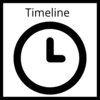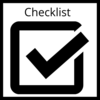Your steps
Click on the steps to expand or collapse. Expand All Steps (+)Step 1: Write your introduction
Percent time spent on this step: 10%
Use the research you gathered and thought about in your pre-lab work (PDF) to prepare the introduction to your lab report. The introduction to a lab report usually includes the following elements:
- Background information about scientific concepts related to the lab;
- The lab's purpose;
- The lab's objective(s);
- Your hypothesis for the experiment;
- Reasons for your hypothesis.
For additional help, check out WriteOnline.ca's Section D: Parts of a Lab Report > Introduction.
Step 2: Write your materials and methods
Percent time spent on this step: 5%
Write a story of the methodology you followed. As you describe your process, refer to equipment and analytical tools you used. Your goal is not to make a list but to write a precise account.
You should provide only those details needed to conduct the experiment. Avoid a discussion of procedures and tools that your classmates would be familar with. WriteOnline.ca's Section D: Parts of a Lab Report > Methods and Materials explains what to include in your materials and methods section.
Step3: Develop tables and graphs. Write a summary of your results
Percent time spent on this step: 25%
What did you observe? Your goal is to show trends, patterns, and relationships in your data. Your first step is to develop tables and graphs that help you tell a story of what you observed. Next, incorporate these visuals into a written story of these outcomes. Remember: write about what you saw, not why it happened. Your results section should include:
- An introductory summary of your significant observations and the trend(s) you see;
- The body paragraphs where you highlight your observations;
- Visuals (graphs, tables, figures) that serve as evidence for the observations.
For more information on explaining data to readers check out WriteOnline.ca's Section D: Parts of a Lab Report > Results. Also, take a look at the Office of Academic Integrity's information on Integrity for Students to learn more about using other people's data.
Step 4: Discussion section prep.: Analyze your results
Percent time spent on this step: 15%
You are now ready to think more deeply about what your results mean. Why did you get the results you did? How do these results differ from previous studies, other class experiments, or even other classmate’s findings? What are the implications of those differences? Review the WCC's resource, How to think: Moving from research to writing. The following strategies can help you analyze the significance of your results:
- Re-read your lab notes.
- Compare your findings with others in the class.
- Find and read articles or other material related to your lab experiment (Keep track of your sources as you go. You’ll need to prepare a reference section later).
- Use UWaterloo Libraries' subject-specific research guides to find relevant sources.
- Transform your everyday search habits to fit the academic environment with the Everyday vs. Academic Research module from the UWaterloo Libraries.
- Consult the Libraries' online learning resources on evaluating sources. For instance, the RADAR method, introduced in the RADAR Framework module, can help you consider the relevance, authority, date, accuracy, and the reason for its creation.
- Need to do more extensive source evaluation? consult the Libraries' Assessing Source Quality (beyond RADAR) module for additional guidance.
Step 5: Write your discussion
Percent time spent on this step: 10%
Use the research and analysis you completed in Step 4 to critically reflect on your experiment and its results. Consult your lab manual, TA, or instructor for specifics about what to include. A discussion section can include the following parts:
- A summary of your findings;
- An explanation of your findings (Why did you get the results you did?);
- A comparison of your results with previous research or other findings;
- A discussion of the weaknesses and limitations of your experiment;
- An analysis of the significance of the results (What do the results mean? So what?);
- Recommendations for future research.
For more information on writing the Discussion, check out WriteOnline.ca's Section D: Parts of a Lab Report > Discussion.
Step 6: Write your conclusion
Percent time spent on this step: 10%
Use the research and analysis you completed in Step 4 to critically reflect on your experiment and its results. Consult your lab manual, TA, or instructor for specifics about what to include. A discussion section can include the following parts:
- A summary of your findings;
- An explanation of your findings (Why did you get the results you did?);
- A comparison of your results with previous research or other findings;
- A discussion of the weaknesses and limitations of your experiment;
- An analysis of the significance of the results (What do the results mean? So what?);
- Recommendations for future research.
For more information on writing the Discussion, check out WriteOnline.ca's Section D: Parts of a Lab Report > Discussion.
Step 7: Write the abstract. Prepare a bibliography.
Percent time spent on this step: 10%
An abstract is a brief summary of your report (about 100-200 words) placed at the beginning of the paper. The abstract should contain the following information:
- The objectives of the lab and your primary hypothesis;
- A brief description of the procedures;
- A short conclusion of the overall findings and how they relate to your original hypothesis;
- An explanation of your conclusions;
- The scientific concepts you learned during the lab.
Your bibliography should contain reference information for all the sources you used to write your report. It is formatted according to the citation style guide recommended in your lab manual or by your instructor. For help, use the Omni, the Libraries' Catalogue module to learn how to search for the citation style guide you need. Using reference management software can help you manage your citations as you write. Use tools such as Zotero, which has unlimited storage provided by the UW Libraries, or Mendeley for building your bibliography.
Step 8: Put the lab report in final form. Revise and edit.
Percent time spent on this step: 15%
Take one final look at the formatting of your document, images, and references. Consult your lab handbook and TA for more information on specific formatting procedures.
As with all writing, the first draft of your lab report is likely to have omissions, problems with organization and clarity, and grammatical or spelling errors. For a successful report, take time to revise and edit your work. For help with revising and editing, check out WriteOnline.ca's Section E: Revising Your Work.
You can also refer to WriteOnline.ca's Section C: Critical Features > Scientific Writing to learn more about scientific writing standards.

